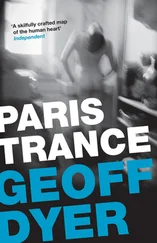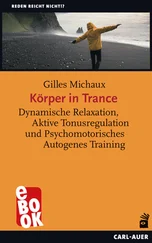And what did you think an anthropologist might have to do with something like this? Not exactly Margaret Mead’s beat, is it?
Did it enliven your existence to learn that in cases involving large numbers of severely burned fatalities, a forensic anthropologist is sometimes called in to assist in the body recovery process? This assistance is especially helpful in identifying so-called commingled remains in situ so as to preserve the scene.
The forensic anthropologist also aids in distinguishing human remains from those of livestock or other animals. Pretty tricky business.
Were you impressed by the number of different specialties and subspecialties of forensic science that might be consulted in a case like this?
In this case, however, the only specialist whose aid was required was the forensic odontologist. You remember, Mr. Galton, the request to have Miss Galton’s dental records flown down.
Do you understand now why science sharply discounts the possibility of what people like to refer to as natural causes ? It is nearly always more useful to assume that the term is being employed in a given case as a euphemism, a sort of palliative for the sake of the bereaved.
What is important to remember is that forensic pathology illustrates the intertwined relationship between science and religion most explicitly. Each shares a sort of faith in that which unfolds only in death.
People generally die from unseen things, and for the scientist to believe in them, in these hidden manners of death, in the ways in which a body holds back the secret knowledge of its defilement, is a kind of faith. There are always things that go unseen.
Thus it is a good idea to clamp off the airway of a corpse and therefrom recover unconsumed accelerant.
Also always a good idea to dissect the airway and search for soot to determine if the decedent was alive and breathing during the fire.
Another good idea to check the percentage and degree of body burns in search of inconsistencies.
To check hemoglobin levels, that is a good idea.
Cyanide levels too.
It is always, always, always a good idea to check female corpses for gravidity.
A good idea to check for signs of trauma.
A good idea to bear in mind that the bodies of murder victims are often burned to disguise the crime, or aspects of the crime, such as sexual assault.
To x-ray the corpse or corpses to look for metal and such, as in bullets.
It is a kind of faith; there are always things that go unseen. The other kind of faith is for the graveside, to succor the horror of those goodbyes keened beneath the unbroken sky that drapes the rolling chill of an American cemetery, huge and groomed and implacable.
Thank you, Mr. Galton.
PART TWO — The Locust v. The Elephant
I keep asking you why you had to leave your country, and all you talk about is things that happened to you there.
— U.S. IMMIGRATION JUDGE TO ASYLUM SEEKER, AS REPORTED BY AMNESTY INTERNATIONAL
WHAT THEY RECEIVED IN Los Angeles were negative updates. Before each other set of SLA parents was told of the positive identification of its dead child, Hank and Lydia were first informed that the remains had been determined not to have been Alice’s. Whether this protocol had been formally established ahead of time or had just spontaneously evolved, Hank couldn’t say. It was a strange manifestation of privilege. The report would come, and afterward Lydia would raise her magazine like a mask, replacing her features with those of the cover girl.
It was while all the parents waited for them to run out of corpses to identify that Hank had taken time out to educate himself in the fundamental principles of violent death. He thought he was being brave. He thought there was some convertible value to the stoicism with which he would carry around the knowledge of death by fire, the specific appalling nature of wound ballistics, of kinetic energy and temporary cavity formation, contact wounds and shock waves and secondary projectiles. He thought of preparation for the worst as an amulet against unwelcome feeling. Above all, that.
Helene had come with them. They couldn’t find someone to stay with her at the house on such short notice; it was as stupid as that, just like for a regular family.
She wore one of Alice’s jackets. She was the little sister. She folded her hands and stared into space while her parents spoke to the press, submitting to the inconvenience the way she might have if her parents had run into a chatty acquaintance on the street. At one point, sitting on the edge of her bed the first evening, Friday, she began to sob. She felt the muscles of her face pulling at her and knew how ugly she must be. Lydia descended on her like an infuriated bird. “You stop that. I don’t need this. Just stop it, stop it right now. I don’t need it. Stop now.”
Most of the restaurants they’d known as a family were gone. Now Hank was familiar with L.A. as the sort of girdled entity that business trips held within them, endlessly replicable, but all that was left of the city where they’d made their home for several years was a faint trace; the time they’d spent here was carried whole in the briefest cat’s-paw of breeze that came down off the hills, holding the scent of years; it was here now, but it was not the smell of the present. Then it was gone.
So they sat in a strange restaurant, dark and womblike, its sounds absorbed by the padding that seemed to cover all its surfaces, and ate bacon cheeseburgers on kaiser rolls with fries and Cokes. And everywhere they went, they watched television. There was only one story and they were in it.
They chartered a plane, flew back. What was the point in staying? Alice Galton was not among these insulted bodies. Alice was alive!
They experienced the trip itself as any family might have: Hank resisted buying the expensive airport food. Helene wanted a T-shirt. Lydia bought a magazine and a Vicks inhaler at a newsstand.
In the VIP lounge they were the most famous among the famous. Lydia sat in a corner, far from other people, alone in the contagion of her shame. Her daughter was an armed and dangerous fugitive, charged with nineteen criminal counts.
In Hillsborough, Hank Galton watched the rain, a mist of fine droplets that condensed on the eaves overhanging the leaded glass windows of the study to hang there before falling in stuttered drops to the gravel that ringed the house. There was a damp chill that seeped through the house’s bones and into his, a dank humidity that curled papers and started mildew growing on the soles of unloved shoes in the neglected depths of the closets. He sat at his desk, a large neat rectangle of wood glimpsed from beneath a quarter inch of polyurethane, and watched through the mullioned panes: the rain coming off the roof, the wide gravel belt, the lawn sloping gently toward the wooded hills beyond and the vast gray threat above. Within the past hour the house had filled again after having sat empty for two days, the reporters once again stood outside under the canopy that had been erected for them, the FBI agents camped in the library with their papers sprawled across the old refectory table, but this room retained the forlorn stillness of its vacancy, and Hank settled into it as if he’d sought it out. He smoked and watched, the garlands of smoke oddly holding their shape, compact and sinuous, in the damp, still air, twisting slowly before dissipating.
After a while he stood and moved toward a small armoire. He removed a powder blue cardigan from it and studied the slack flesh of his face in the mirror as he buttoned up. It was a pleasant face, with bland good looks corrupted by heavy black-framed eyeglasses and a weak chin. He shrugged the sweater into place and left the room.
Читать дальше












